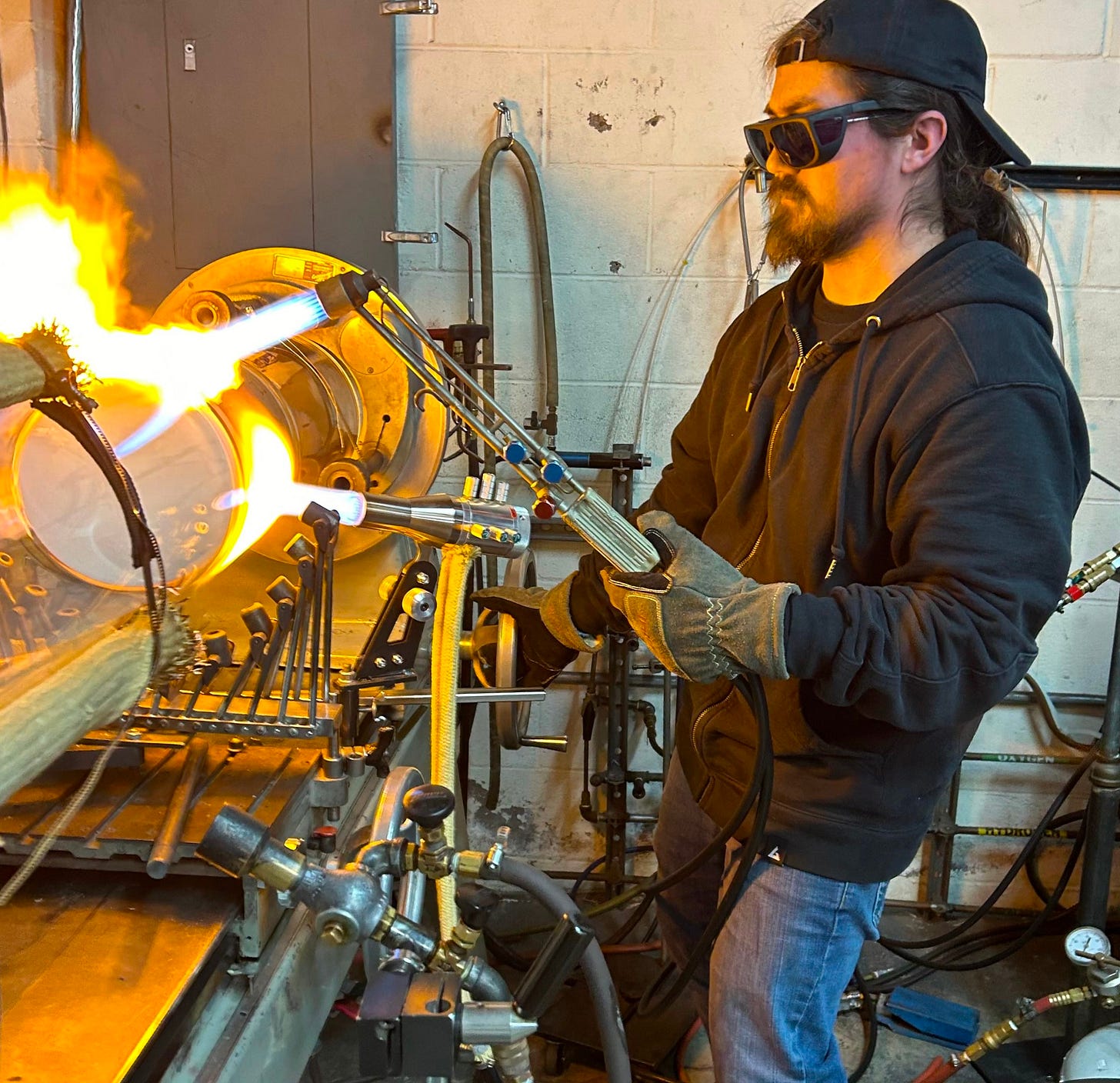The Mad Science—and Master Craft—of Handblown Lab Glass
Where master craftsmanship meets cutting-edge science, it's the best of both worlds.
Dear Friends,
Glassblowing, which dates to the 1st century BC, is a difficult craft to master (not to mention a hazardous one, as simply melting glass requires temperatures of more than 2500 degrees Fahrenheit). Today it’s a skill we most often associate with fine tableware, art glass, and other beautiful objects, such as the dazzling, large-scale glass sculptures made by Dale Chihuly. But with specialized training, professional glassblowers, like those of the West Berkeley co-op Adams & Chittenden, can also make scientific glass, turning out precise, customized tools for advancing research and discovery—tools that machine-made glass cannot match.
We hope you’ll enjoy reading “The Mad Science—and Master Craft—of Handblown Lab Glass,” written by our contributing editor, .
We always welcome your thoughts and suggestions, which you can offer in a comment, by tagging us in Substack Notes, or via email. Thank you for reading and sharing our stories, for supporting our work with a paid subscription if you can, and for being such a loyal part of the Craftsmanship community.
Sincerely,
Todd Oppenheimer
Publisher & Editor-in-Chief, Craftsmanship Magazine

The Mad Science—and Master Craft—of Handblown Lab Glass
by
I don’t know if it started with “Young Frankenstein” or “Back to the Future,” but somewhere along the line, I got curious about that wild scientific glassware traditionally used in the movie laboratories of mad scientists.
As luck would have it, one of the country’s most revered scientific glassblowing shops was nearby, in the quasi-industrial flatlands of West Berkeley. Adams & Chittenden has been “blowing” scientific glass since 1993 and moved to its current location in 1997. And though I had some artsy notions about glassblowing, the first thing I realized when I walked in was: This is not the Renaissance Faire.
I was greeted by Moe Schandelson, the cooperative’s shop manager. He led me through the building’s roll-up gate and into a large interior work area. The muffled roar of a glass lathe in action supplied the ambient sound of a dragon’s lair.
“There are two main glasses that people work with,” Moe explained. “There's soda lime glass—soft glass—and there's Pyrex, or borosilicate. Soda lime is the more traditional Venetian glass. They pull it out of big furnaces and shape it using long pipes—the same tools they’ve used for hundreds of years.”





